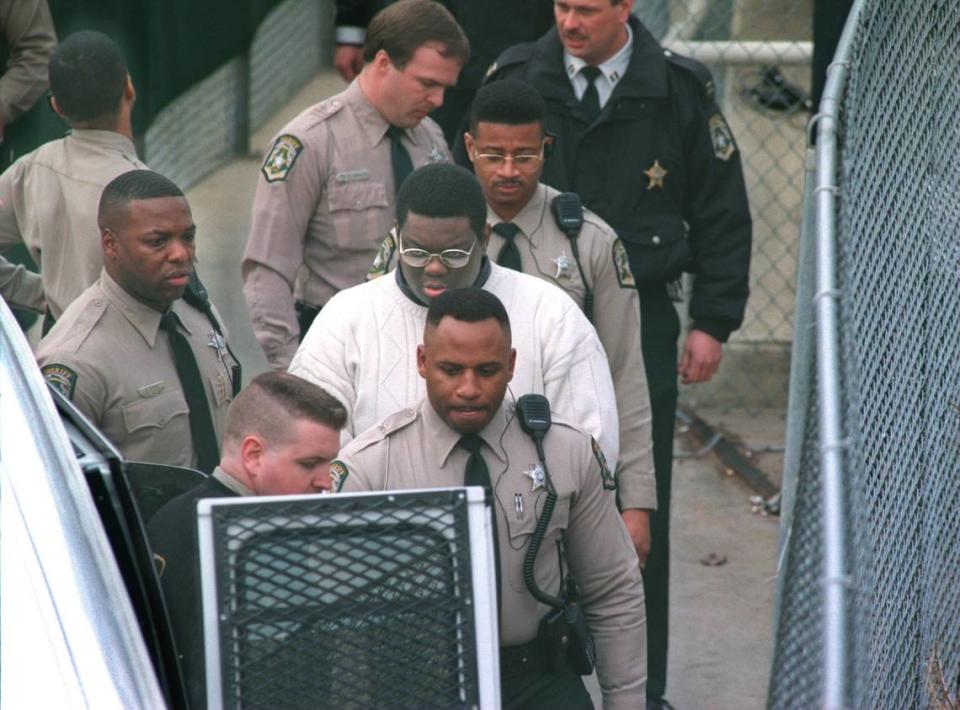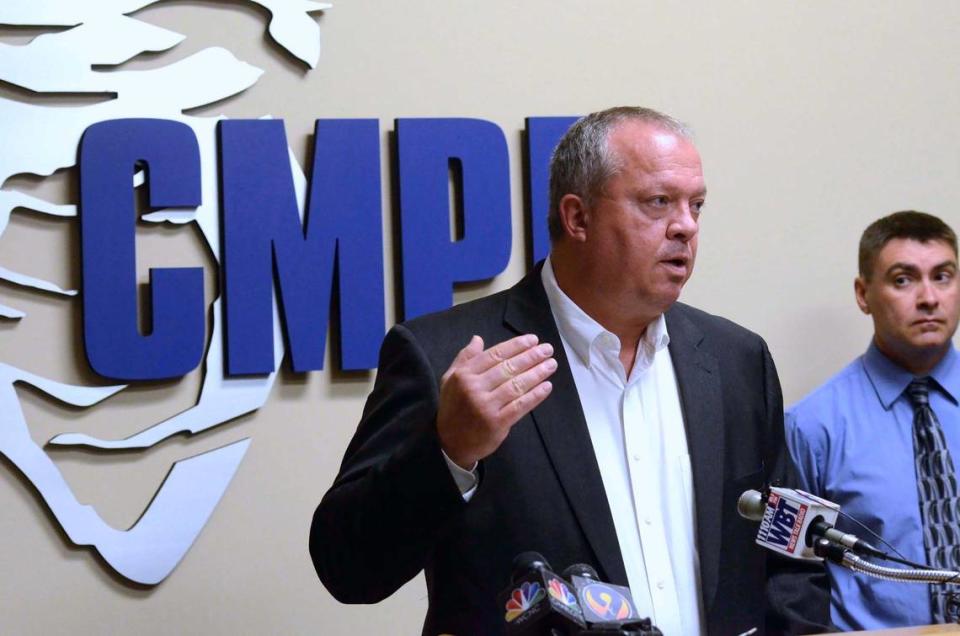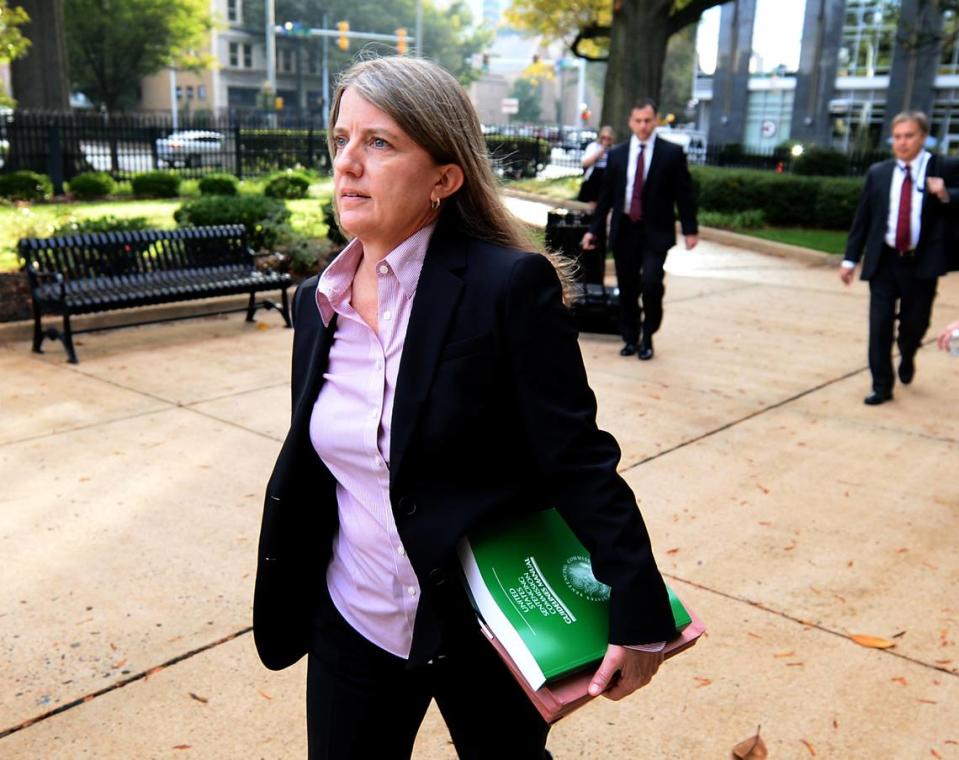In 1994, Charlotte police searched for a murderer. They caught a serial killer instead
Two hours before his arrest, Henry Louis Wallace watched professional wrestling on TV with some friends in their east-side apartment and talked of leaving Charlotte.
His companions had started worrying about the 28-year-old. Wallace had begun wearing the same clothes for days at a time, and he no longer appeared to have a place of his own. They suspected that he had become a crack addict.
On March 13, 1994, Wallace told his companions that he wanted to go home to Barnwell, S.C. Just before 3 p.m., they handed him a Corona and $2 to catch a city bus to the Greyhound station.
“Y’all might not see me no more,” Wallace told a friend around that time.
He never caught his bus. Two hours later, Wallace was under arrest.
A Killer's Long Shadow
30 years ago, Henry Louis Wallace cast a murderous shadow across Charlotte, raping and strangling 10 women before his arrest. Wallace's killings broke up families, stole daughters and sisters from their loved ones and left seven children without their mothers.
As a serial killer moved like a shadow across Charlotte, one woman made a promise
In 1994, Charlotte police searched for a murderer. They caught a serial killer instead
11 victims in two states: A timeline of Henry Wallace’s killings in Charlotte and SC
Starting in 1992, Wallace had murdered with impunity for 22 months, moving like a shadow across the city from victim to victim.
In the spring of 1994, a series of back-to-back-to-back killings finally brought him to the attention of Charlotte-Mecklenburg Police.
First came the Feb. 20 murder of Vanessa Mack in west Charlotte. Less than three weeks later, the bodies of Brandi Henderson and Betty Baucom were found in the same east-side apartment complex.
All three women had been robbed, raped and strangled. None of their apartments showed signs of a break-in, meaning they had each allowed their attacker into their homes.
Most importantly, Mack, Henderson and Baucom had been strangled in the same way, with double ligatures of bras, pillow cases, T-shirts or towels.
That the three women died in a similar fashion was striking. In 1993, there had been only six strangulations in Mecklenburg County, less than 5% of the total homicides.
Now, police were dealing with their third in less than three weeks.
Two pieces of evidence gave the cops their first big breaks.

A name and a print
First, according to former CMPD homicide detective Darrell Price, Henderson’s boyfriend told police that Henderson was so shy that she would have opened her door to only two other people. One was Wallace.
Secondly, after Baucom’s body was discovered, her Nissan turned up behind a shopping center near her apartment. The interior had been wiped clean. But police found a palm print near the trunk.
On March 11, they received a match. The next day, they also had a fourth body.
Debra Slaughter, 35, was discovered on her living room floor by her mother. She lived at the Glen Hollow Apartments, about a half mile from where Henderson and Baucom had been killed. Slaughter, too, had been raped and strangled. She also had been stabbed 38 times, and there was a balled-up sock in her mouth.

By then, Price and fellow detective Mark Corwin had been pulled off investigating the scenes of the recent killings and given a single task: Find a former fast-food restaurant manager who had come to the city less than three years before and seemed to have female friends all over town.
At around 5 p.m., Officers Gilbert Allred and Sidney Wright found Wallace hiding in the bathroom of a friend’s eastside apartment, not far from where the three latest killings had taken place. He was arrested on an outstanding warrant for shoplifting a $48 sweater at nearby Eastland Mall.
Wallace, police were learning, had connections to each of the four women. Henderson’s boyfriend was one of Wallace’s best friends, and Baucom and Slaughter both worked with Wallace’s former girlfriend at the Bojangles on Central Avenue.
Wallace also had dated Vanessa Mack’s sister, Leslie Little. In 1993, Little and Wallace had worked together at the Taco Bell on Sharon Amity.
At the police station, according to court documents and Observer accounts at the time, the first sessions of what would be an all-night interrogation yielded little. Wallace was the main suspect, but Price said police did not have enough evidence to charge him with murder.
Price and Corwin began their questioning shortly before 7 p.m., talking to Wallace about sports, his jobs, and his family and friends.
At 10, the detectives read Wallace his Miranda rights and began to bore in:
Why, they asked Wallace, is your hand print on the back of Betty Baucom’s car?
Why does the man seen in an ATM photo with Mack’s bank card have an earring with a dangling cross, just like the one in your arrest photo from earlier that day?
Wallace kept deflecting. The back and forth dragged on for six more hours.
“Don’t you think it’s funny that so many people around you are dying of unnatural causes?” Price said he asked.
“That happens to everybody,” Wallace replied. “Hasn’t it happened to you?”
At one point, Wallace mentioned that he knew detective Tony Rice from the investigation into the 1992 disappearance of Caroline Love, the roommate of Wallace’s former girlfriend. A call went out, and at 5 a.m. Rice entered the room.
Rice, who had not worked the Wallace case up to that point, asked all those present to bow their heads. While holding Wallace’s left hand, the detective led a prayer about thanks and repentance, guidance and forgiveness, and Wallace began to cry.
Rice told Wallace it was time to cleanse his soul and tell the truth, no matter what the truth might be. After the amens, Wallace sighed.
“Let’s do it this way,” he said, reaching for a pen and pad. Then Wallace began jotting down names.
The detectives expected the list to begin and end with the four killings over the last three weeks.
But Wallace kept writing.
The women
Detective Garry McFadden was outside the interrogation room when one of his colleagues exited with Wallace’s list.
“He’s got names that we don’t have,” McFadden, now Mecklenburg County sheriff, remembered saying.

Nine names in all.
Wallace also used a question mark to account for his first Charlotte victim, the only one he did not know. She was later identified as Sharon Nance, 32, who was found beaten to death in June 1992 near Rozzelles Ferry Road.
There was Caroline Love, 20, the roommate of Wallace’s girlfriend at the time, who disappeared in June 1992. Wallace helped file the missing person’s report. Now, he would lead police to her body.
Shawna Hawk, 20, was a college student who was raped and strangled and found floating in the bathtub of her family home on Feb. 19, 1993. Wallace later attended her funeral.
Audrey Spain, 24, was Wallace’s co-worker and co-manager at the Taco Bell. She was murdered on June 22, 1993.
On Aug. 10, 1993, Wallace raped and strangled Valencia Jumper, a 21-year-old college student who was his sister’s friend.
College student Michelle Stinson, 20, a friend of Wallace’s from Taco Bell, was raped, stabbed and strangled on Sept. 14, 1993 in her apartment while one of her sons watched.
Then came Mack, Henderson, Baucom and Slaughter.
Wallace also confessed to an 11th murder, the 1990 rape and strangulation of 18-year-old Tashanda Bethea in Barnwell.
All of the Charlotte victims were Black women between 18 and 35. All had been murdered over the previous 22 months. And all but Nance had known Henry Wallace.
During 10 hours of taped confession, Wallace casually shared details — how some of the victims fought, scratched or bit him, while others wept and asked for mercy. One fell to her knees and prayed.
He raped and killed them anyway. Wallace considered almost all of them friends. He told detectives that their ghosts spoke to him in his dreams.
He boasted that he sometimes used a professional wrestling move he described as “the Boston choke hold” to overpower his victims.
After raping them, Wallace said, he would give the women the impression that they were safe, only to strangle them with a piece of their own clothing, a towel or the pillow cases he began smuggling into his crime scenes.
“He was playing God,” Price says.
The killer took elaborate steps to hide his tracks, almost toying with police. He explained that with some of his victims, he turned down the thermostats in their apartments to slow down decomposition to confuse investigators as to when the killings occurred.
After strangling Valencia Jumper in August 1993, he soaked her body in rum, then put a pot of beans on the stove and turned the burner to high. The medical examiner ruled Jumper died of “thermal burns,” changing the cause of death to strangulation only after Wallace’s confession.
“He did everything he could to throw us off,” Price says. “It was almost like he knew how we investigated our cases, and he anticipated what we would think and what we would do.”
The trial
In September 1996, the largest murder trial by number of victims in North Carolina history opened in Charlotte.
Wallace was charged with nine counts of first-degree murder, eight counts of first-degree rape and 10 other crimes. Prosecutors asked for the death penalty. (The killing of Sharon Nance did not fit the pattern of the other deaths, and never went before a jury. Likewise, Wallace was charged but never prosecuted for Bethea’s death.)
Defense attorneys Isabel Day and Jim Cooney acknowledged that Wallace committed the Charlotte murders, but they said their client’s mental illness and childhood trauma left him incapable of killing intentionally, forming the required intent. Because there was no premeditation, they argued, there couldn’t be a death penalty. They also accused the police of illegally obtaining Wallace’s confession.
District Attorney Peter Gilchrist gave the job of first convicting Wallace then persuading jurors to put him on Death Row to Marsha Goodenow, a veteran homicide prosecutor, and Anne Tompkins, a West Charlotte High School and UNC Charlotte grad who was a few years into her career at the DA’s office.

The prosecutors took six months to prepare. The jury selection and trial ran on for an additional four.
Four hundred exhibits were presented, 75 witnesses sworn in. Seven hours of Wallace’s taped confession were played in open court. There was so much evidence tucked into files and cardboard boxes that Tompkins’ fingers were laced with paper cuts before the trial ended.
From the start, Tompkins, who later became U.S. Attorney for the Western District of North Carolina, says she and Goodenow harbored the same fear: How can we keep the jury from becoming numb to so many victims?
The trial pushed past Christmas and New Year’s, the pressure and exhaustion rising for all involved. Tompkins recalls that when she reached for a glass of water before the start of her closing argument, her hand shook uncontrollably.
On Jan. 7, 1997, two years and 10 months after his arrest, Wallace was convicted of nine murders. Three weeks later, the same jury sentenced him to death.
For each sentence, the name of the victim was spoken aloud. Nine times Judge Robert Johnston read Wallace the required refrain:
“May God have mercy on your soul.”
Twenty-six years later, Wallace remains on Death Row.
This story includes information compiled by The Charlotte Observer staff in 1994.

 Yahoo Sports
Yahoo Sports 